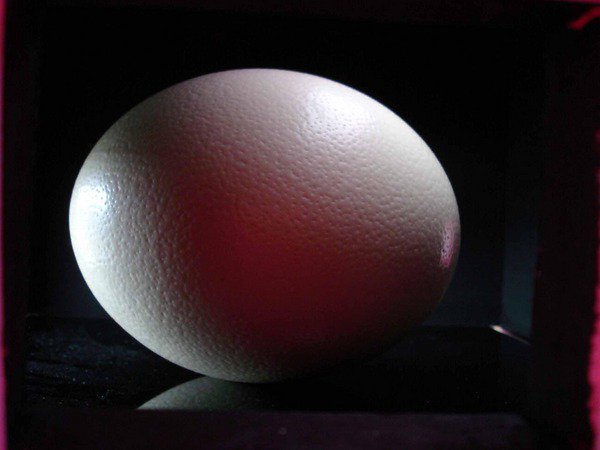Herbert Distel
dal 20/4/2012 al 1/6/2012
Segnalato da
Stefan Banz & Caroline Bachmann
20/4/2012
Herbert Distel
Kunsthalle Marcel Duchamp, Cully
Cuckoo's egg - cadeau empoisonne'. For the multimedia artist, eggs are the most universal and most numerous ready-mades in existence. The exhibition features the work about a story of an egg from a birdhouse.

For Herbert Distel, eggs are the most universal and most numerous ready-mades in existence. When he showed his huge Floating Egg – formed from polyester and measuring 300 x 200 x 200 cm – at the exhi- bition “Premio nationale di Scultura all’aperto in Vira Gambarogno” on the Lago Maggiore in the summer of 1968, it was torn from its moorings by a violent storm during the opening and swept away at high speed towards the Italian shore. This impressive incident fired his imagination and led to the realization of his Canaris project in 1970. At Tazacorte on the western coast of the Canary island of La Palma, Herbert Distel lowered his Gigantic Egg into the water on 10th June 1970 and let it drift out to sea. Driven by the constant north-east trade winds, the egg crossed the Atlantic, finally smashing to pieces against the cliffs of the Caribbean island of Trinidad.
In the spring of 2011, over forty years later, part of the support of a birdhouse in the artist’s garden, in which blue tits had been nesting only a short time before, had worked loose. Climbing up a ladder in order to repair it, Distel could not resist his curiosity and opened the door of the birdhouse, whereupon “a tiny, wonderful, intact bird’s egg fell straight into my hand.” Distel was altogether astonished and saw this occurrence as an omen of unusual significance. Indeed, only a short time later he received an invitation from the Kunsthalle Marcel Duchamp, the size and appearance of which bear a striking resemblance to those of a birdhouse. And since the Kunsthalle is situated not far from the Forestay Waterfall, which Marcel Duchamp photographed for his famous diorama Étant donnés in 1946, and the egg for Distel is not just a homage to life but also a symbol of awakening and renewal, the artist felt he could do nothing else but accept the invitation and give back to this institution the egg that had so tellingly tumbled into his hand. It is, so to speak, the artist’s act of placing a wonderful ‘cuckoo’s egg’ – un cadeau empoisonné, as the French say – into the Kunsthalle’s nest. But danger lurks: the audible purring of a cat (a cat from mKatzelsdorf!) in the Kunsthalle’s interior makes us all too aware of the immanent and inevitable fate of every egg – and hence of every life and of every ready-made..
Herbert Distel (born in Bern in 1942) is a multimedia artist working in many different creative fields, including audiovisual/audiophonic and printed media. His best-known work is The Museum of Drawers – a found cabinet with 20 drawers each containing 25 tiny rooms where he invited living artists to contribute a miniature work of art – which has been shown at many venues, including documenta 5, the Biennale di Venezia, the Bienal de São Paulo and the Museum of Modern Art, New York. Herbert Distel today lives in Katzelsdorf near Vienna.
Kunsthalle Marcel Duchamp
Place d’Armes | Quai de l’Indépendance, Cully, Switzerland
Monday to Sunday round the clock



